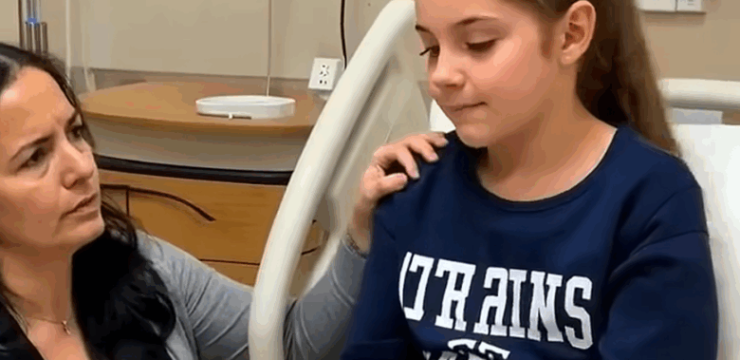Imagine something as simple as a bug bite changing your life forever. For millions around the world, this is not just a nightmare—it’s a reality. Chagas disease, often dubbed the “silent killer,” is a life-threatening illness spread by nocturnal insects known as kissing bugs. These bugs emerge under the cover of darkness, and their bite can silently lead to a lifelong infection or even death. Despite affecting millions, this deadly disease remains largely unknown and underestimated. Let’s delve into the chilling details of Chagas disease and what you need to know to protect yourself.

What is Chagas Disease?
Chagas disease is a parasitic infection caused by the protozoan parasite Trypanosoma cruzi. The disease is transmitted to humans through the bite of infected triatomine bugs, more commonly known as kissing bugs. These bugs feed on the blood of animals and humans, typically during the night, making them especially dangerous while we sleep.
The Nighttime Predator: The Kissing Bug
Kissing bugs are primarily found in rural or suburban areas, where they hide in the cracks and crevices of poorly constructed homes. They come out at night, drawn to the warmth and carbon dioxide emitted by sleeping humans. After feeding, these bugs defecate near the bite site. The infection spreads when the victim unknowingly rubs the bug’s feces into the bite wound, eyes, or mouth.
The Silent Disease: Why Chagas Often Goes Undetected
One of the most terrifying aspects of Chagas disease is its ability to remain hidden for years. Many people infected with Trypanosoma cruzi experience no symptoms initially. However, the parasite silently works its way into the heart and digestive system, where it can cause severe complications decades later. This asymptomatic phase makes Chagas a “silent” disease, often diagnosed only when it’s too late to prevent serious damage.
The Global Reach: Chagas Disease Beyond Latin America
While Chagas disease is most prevalent in Latin America, it is no longer confined to this region. Globalization and migration have spread the disease to Europe, the United States, Japan, and Australia. The World Health Organization (WHO) estimates that around 6 to 7 million people worldwide are currently living with Chagas disease, many of whom are unaware of their condition.
Real-Life Stories: The Human Toll of Chagas
Consider the story of Emiliana Rodriguez, a Bolivian woman who has lived with the fear of Chagas disease since childhood. After moving to Barcelona, Emiliana discovered she was infected during a routine prenatal check-up. Her fears from childhood became a harsh reality, as she grappled with the implications for herself and her unborn child. Similarly, Elvira Idalia Hernández from Mexico faced the devastating diagnosis when her 18-year-old son tested positive for Chagas. These stories highlight the personal toll this disease can take on families and communities.
The Deadly Statistics: Chagas in Numbers
Chagas disease is responsible for an estimated 12,000 deaths annually, making it more lethal in Latin America than malaria. Yet, it remains one of the most neglected diseases on the global health agenda. In the United States alone, nearly 300,000 people are believed to be living with the disease, though it is not considered endemic.
Symptoms of Chagas Disease: What to Watch For
While many may not show symptoms immediately, about 20 to 30 percent of those infected with Chagas will develop serious heart or gastrointestinal issues later in life. Symptoms can include irregular heartbeats, heart failure, difficulty swallowing, and severe abdominal pain. These complications can be debilitating and, in some cases, fatal if left untreated.
Why Chagas Goes Undiagnosed: The Diagnostic Dilemma
Chagas disease is often misdiagnosed or goes undetected due to the lack of awareness among medical professionals, especially outside of endemic areas. The symptoms of chronic Chagas disease can mimic other more common conditions, leading to misdiagnosis and inappropriate treatment. This lack of recognition is particularly troubling in countries where Chagas is not endemic, but where many people may be at risk due to migration and travel.
Treatment Options: The Fight Against Chagas
Currently, there are only two drugs available to treat Chagas disease: benznidazole and nifurtimox. While these drugs can cure the infection if administered early, they are less effective in chronic cases and often come with severe side effects, such as dizziness, nausea, and skin rashes. Unfortunately, these medications have been on the market for over 50 years, and there has been little progress in developing newer, more effective treatments.
Challenges in Treatment: The Need for Better Drugs
One of the biggest challenges in combating Chagas disease is the lack of financial incentive for pharmaceutical companies to develop new drugs. The populations most affected by Chagas are often impoverished, limiting the profitability of research and development for new treatments. This has left many patients with few options, forcing them to endure harsh side effects or live with the long-term consequences of the disease.
The Fight for Awareness: Advocacy and Education
Efforts to raise awareness about Chagas disease are crucial in combating its spread. Organizations like the International Federation of Associations of People Affected by Chagas Disease (FINDECHAGAS) and the Barcelona Institute for Global Health are working tirelessly to bring this disease to the forefront of global health discussions. Their campaigns aim to educate the public, encourage testing and treatment, and push for more research into better treatment options.
Preventing Chagas: Steps You Can Take
Preventing Chagas disease involves both personal and community-wide efforts. The CDC recommends several strategies to reduce the risk of kissing bug infestations:
- Seal cracks and gaps in doors, windows, walls, and roofs.
- Remove piles of rocks, wood, and brush near your home.
- Install screens on doors and windows and repair any tears.
- Keep your home and pet areas clean, and regularly inspect for bugs.
- Keep pets indoors at night to reduce their risk of exposure.
What to Do If You Find a Kissing Bug
If you believe you’ve found a kissing bug, avoid crushing it. Instead, carefully capture the bug in a jar filled with rubbing alcohol and freeze it. Then, contact your local health authority or a university lab to have the bug identified. This step is crucial in monitoring the spread of these dangerous insects and preventing potential outbreaks.
The Global Goal: Eradicating Chagas by 2030
The WHO has set a goal to eradicate Chagas disease by 2030, but progress is slow. Experts like Professor David Moore of the Chagas Hub in the UK believe that without significant advancements in treatment and prevention, this goal may not be attainable. Despite the challenges, global efforts continue to push for increased testing, better treatments, and greater awareness.
Chagas disease may be a silent and often overlooked threat, but it is one that millions of people around the world are living with every day. As this deadly disease continues to spread beyond its traditional boundaries, the need for awareness, prevention, and treatment becomes more urgent. By educating ourselves and others, advocating for better healthcare policies, and taking steps to protect our homes, we can play a part in combating this silent killer and protecting future generations from its deadly grasp.





